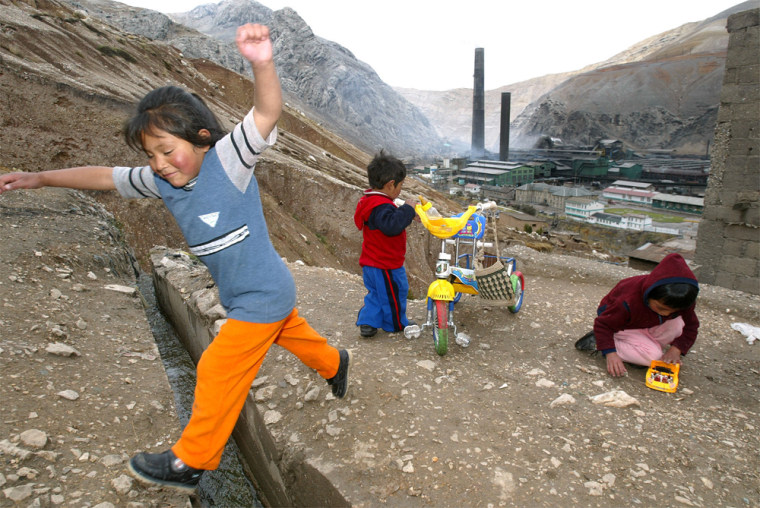Three Russian cities on Wednesday made the top 10 of a list they'd rather not be on: worst polluted cities of the world.
Compiled over seven years by a team of environmental and health experts — including faculty from Johns Hopkins University, Mount Sinai Medical Center and the City University of New York — the report by the Blacksmith Institute, an international environmental research group, lists 10 cities in eight countries.
The Russian cities are Dzherzhinsk, Norilsk and Rudnaya Pristan. The other cities are:
- Linfen, China
- Haina, Dominican Republic
- Ranipet, India
- Mayluu-Suu, Kyrgyzstan
- La Oroya, Peru
- Chernobyl, Ukraine
- Kabwe, Zambia
The report, which did not rank the 10 cities but listed them alphabetically, was compiled from more than 300 areas nominated by non-governmental agencies, local communities and international environmental authorities. The list of criteria included the size of the affected population, severity of the toxins involved and reliable evidence of health impacts.
Report: 10 million at risk
More than 10 million people are at risk for lung infection, cancer and shortened life expectancy because they live in those cities, the report stated.
“Living in a town with serious pollution is like living under a death sentence,” the report said. “If the damage does not come from immediate poisoning, then cancers, lung infections, mental retardation, are likely outcomes.”
The worst-polluted places in the world, the report said, are in secluded areas far away from capitals or tourist areas.
These countries, which are mostly part of the developing world, generally have few or inadequate pollution controls, and the problem is compounded by the local governments’ “lack of knowledge” and the inability of citizens to enforce justice.
According to the report, the cities are reminders of an early industrial era, with most pollution stemming from relics such as unregulated lead and coal mines or unrefined nuclear weapons manufacturing plants.
In Chernobyl, the report estimates 5.5 million people are still threatened by radioactive material that continues to seep into groundwater and soil 20 years after the nuclear power plant exploded there.
Residents of Linfen, which is in the heart of China’s coal-producing Shanxi province, suffer from bronchitis, pneumonia and lung cancer because of the poor air quality.
“Haina has severe lead contamination as the result of battery recycling – a problem common throughout poorer countries,” Blacksmith stated. “India is represented by a nasty example of serious groundwater pollution by heavy metals.”
La Aroya, Mayluu-Suu and Kabwe, all mining towns, were also cited for heavy metals.
42-year life expectancy
And according to the report, the 300,000 people in Dzherzhinsk, a chemical weapons manufacturing site during the Cold War era, have a life expectancy about “half that of the richest nations.” The life expectancy for men in the city is about 42 years and about 47 for women.
Richard Fuller, director and founder of the Blacksmith Institute said the report was intended to shed light on the problem as well as the solutions.
“The good news is we have known technologies and proven strategies for eliminating a lot of this pollution,” he said.
Dave Hanrahan, Blacksmith Institute’s chief of global operations, said some solutions to these problems could be as simple as reducing dust levels and removing contaminated soil.
“The most important thing is to achieve some practical progress in dealing with these polluted places,” he said. “There is a lot of good work being done in understanding the problems and identifying possible approaches.”
